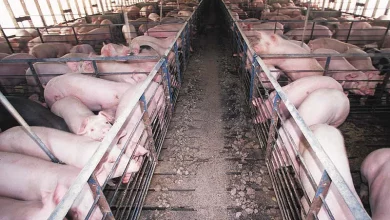
How Community Gardens Can Change Your Neighborhood
Community gardens can make a positive impact in many ways, from health and wellness to decreased crime and vandalism. Many neighborhoods all over the world are proving the effectiveness of the community garden. We’ll explore the purpose of starting one, how they can benefit your community, and how to get started.
What Is the Purpose of Community Gardening?
People are witnessing their loved ones suffer from diseases and cancers because nutritional, fresh foods are not readily available. The industrial food system isn’t working to feed the world in the way it was intended to, so a new generation of gardeners have decided to do something about this by starting community gardens. These initiatives have shown to help revitalize neighborhoods, build a sense of community and belonging, grow healthy food, and provide environmental and agricultural educational opportunities.
But community gardens aren’t new. In the U.S. alone, we used community gardens as far back as the 1890s in order to deal with hard times such as recessions, war, economic declines, and environmental injustice.
Today, we have examples of successful community gardens all over the globe. In Detroit, vacant lots are being purchased by companies and transformed into tree farms. Where foreclosed homes used to be regularly vandalized, there will now be beautiful maples and other hardwoods planted to help create more livable and attractive neighborhoods. In Canada, a company called VertiCrop grows leafy vegetables in the poorest areas of downtown Vancouver and sells them in the neighborhood.
Another initiative, called, “10,000 Gardens in Africa,” has been introducing small community gardens and farms into schools, homes, and nurseries across Africa. This initiative not only worked to raise awareness about the importance of locally sourced and sustainable food, it’s helping raise a generation of leaders who are aware of the value of their land and culture.
Battling Food Insecurities
The U.S. Department of Agriculture (USDA) defines food insecurity a lack of access to healthy foods like fresh produce or the financial resources for household food. In 2017, 40 million Americans including more than 12 million children were considered food insecure. While it’s a complex problem that can’t be solved overnight, community gardens have been an effective mechanism in reducing food insecurity.
Local governments can battle food insecurities by working with community development organizations, citizens, and advocates to help those who are food insecure. One way to do that is by supporting and expanding community gardens. Community gardens not only feed the underserved members of the community by providing fresh produce, there are also environmental benefits, reduced crime and vandalism, reduced health care costs, and increased social cohesion.
Promoting Sustainability
Community gardens also have environmental benefits like promoting sustainability in your neighborhood. One community garden built its space using only salvaged, donated, and recycled materials. They built growing beds, compost bins, signs, seating, and more from materials like bricks, pallets, cinder blocks, and boards, reducing their carbon footprint and expenses.
They are also planning initiatives to make their watering processes more efficient and environmentally friendly by collecting rainwater and watering the garden through a solar-powered drip-irrigation system. Additionally, this community garden doesn’t waste anything and utilizes compost bins to their advantage, creating an even greater environmental and financial impact.
Improving Health
Lack of access to healthy, fresh foods leads to poor diets that are high in calories but low in nutritional value. Over time, poor diet leads to obesity and diseases like type 2 diabetes and heart disease. People who are food insecure are at an even greater risk of developing health problems.
Not only do community gardens provide fresh food for people who otherwise might not have access, they provide many other health benefits to the people involved. Community gardens bring people together and reduce alienation and loneliness, especially for the elderly and disabled. And many people experience reduced symptoms of anxiety and depression just by gardening. Health benefits of gardening include:
- Reduced symptoms of anxiety and depression
- Improved attention and focus
- Lower cortisol levels (a stress hormone)
- Lower BMI (body mass index)
- Reduced loneliness and alienation
- And increased overall satisfaction with daily life
Working with your community and eating fresh, nutritious produce will greatly improve your life and your health. But studies have found that the bacteria found in soil can help brain cells produce serotonin, an important neurotransmitter that contributes to feelings of well-being and happiness.
Now that you understand the benefits of a community garden, you might be ready to get out there and start your own. That’s great ambition! But in order to reap all the rewards a garden can offer, you’ll need to know a few things first.
How to Start a Community Garden
To start a community garden, you have to find land. You can start a garden on public land, or somebody in the community could donate a piece of their land. A city government, company, or other organization can also acquire land in a number of ways. Similar to the community in Detroit mentioned earlier, the city of Cincinnati decided that instead of letting the many abandoned homes and buildings continue to rot, they will transform the plots into lush urban gardens.
Key Elements For Success
While every garden is unique, there are a few key elements to ensure your community garden fosters the social, health, and environmental benefits mentioned in this article. This report shows the key elements for success are:
- Support and resources from local leadership.
- Volunteers and community members, including residents, schools, health departments, universities, businesses, and civic associations.
- Skill building and educational opportunities such as gardening workshops, books and training materials, newsletters, or websites.
Many successful community gardens have made a positive impact on neighborhoods across the globe in social, physical, and environmental ways. Will yours be next?




